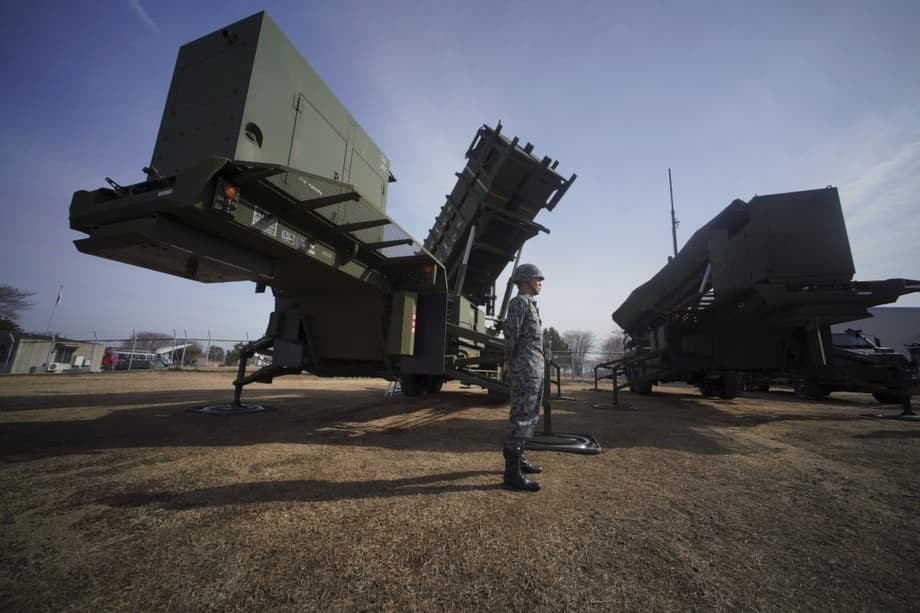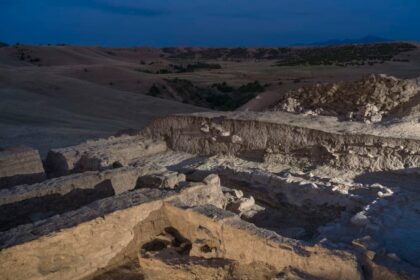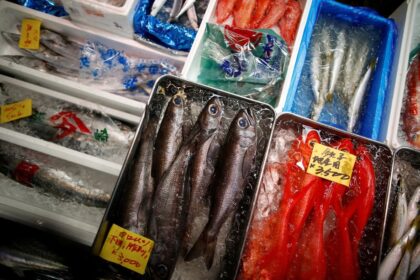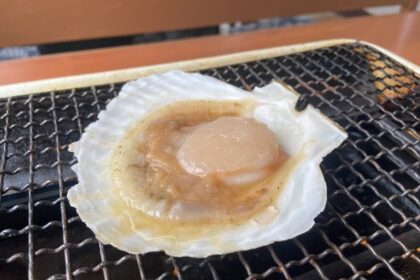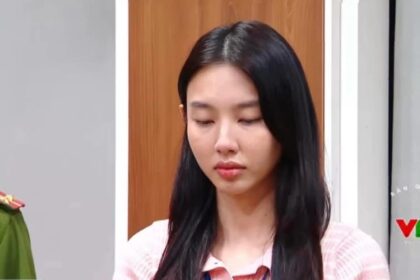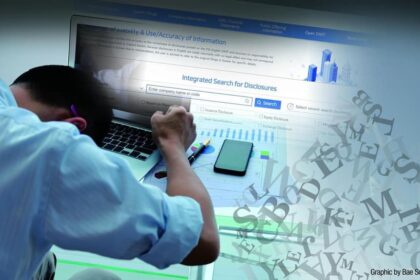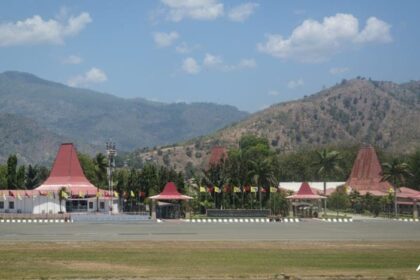Why this Patriot shipment matters now
Japan has exported domestically produced Patriot PAC-3 surface to air missile interceptors to the United States for the first time under eased export rules. The shipment, drawn from Japan Air Self Defense Force stocks, helps Washington replenish missile inventories at a time when the United States is supporting Ukraine and sustaining air and missile defense deployments across Europe, the Middle East, and the Indo Pacific. Beijing has condemned the move, calling it an extremely dangerous signal and arguing that Japan is loosening restraints that have shaped its postwar security policy for decades.
- Why this Patriot shipment matters now
- What changed in Japan’s export rules
- Beijing’s response and the postwar order debate
- What the Patriot system is and what Japan builds
- What it means for US stockpiles and Ukraine support
- Regional ripple effects across Asia
- Tokyo’s strategic goals and domestic politics
- Moscow’s warning and the Ukraine question
- The Bottom Line
Tokyo’s step reflects a wider defense shift launched in recent years. Japan’s 2022 National Security Strategy names China as the greatest strategic challenge to Japan’s security, sets a path to lift defense spending toward 2 percent of GDP, and commits to new capabilities such as long range counterstrike. Easing arms export rules, including permission to ship completed US licensed Patriot interceptors back to the United States, is part of that agenda. It also fits a growing Japan–US industrial partnership that seeks to hard wire Japan into allied supply chains for deterrence in East Asia.
What changed in Japan’s export rules
For decades, Japan limited transfers of military equipment under the Three Principles on Transfer of Defense Equipment and Technology. That framework, updated in 2014, replaced an older near total ban with a narrow set of conditions, including strict end use controls and a preference for non lethal items. Until recently, even when Japan produced weapons under US license, it could export only parts, not finished missiles.
In 2023, the cabinet approved a targeted update. If a system is built in Japan under a foreign license, completed items can be supplied back to the license holder’s country at that country’s request. That made the Patriot transfer possible, since the missiles are produced in Japan by Mitsubishi Heavy Industries under a Lockheed Martin license. Tokyo also applied standard end use restrictions to this shipment. A Defense Ministry official emphasized that the interceptors would not be passed on to any other recipient.
After confirming the parameters of the transfer, the official said the missiles would remain under US control.
A Japanese Defense Ministry official said the interceptors “will only be used by the US military and not be provided to a third country.”
Beijing’s response and the postwar order debate
China has reacted with sharp criticism, framing the export as a break with Japan’s self imposed limits since 1945. Chinese officials argue that recent Japanese policies, including higher defense spending, easing of arms exports, and tighter coordination with the United States on extended deterrence, undercut Tokyo’s stated commitment to peaceful development.
At a regular briefing in Beijing, Foreign Ministry spokeswoman Mao Ning warned that Japan’s direction runs counter to regional stability and the norms set after World War II.
Introducing the position, Mao Ning said: “Chinese people and the international community will not allow Japan to go back to the path of militarism, violate its commitment to peaceful development, and disrupt the post war international order. Such attempts will only end in failure.”
Chinese commentators have also cast the Patriot shipment as a template for wider arms exports. Zhang Xuefeng, a Chinese military expert quoted in state linked media, argued that Tokyo’s move signals a lack of restraint and could set off a chain reaction in the region.
Presenting that view, Zhang said Japan’s approach is “an extremely dangerous signal” that could “trigger a series of chain reactions.”
Beijing’s criticism has unfolded amid a period of tense China Japan ties, with disputes over the East China Sea, friction surrounding Taiwan, and tit for tat measures that have at times touched trade and exchanges. In Tokyo, Prime Minister Sanae Takaichi has taken a firmer line on a Taiwan contingency, telling parliament that an attack on Taiwan could qualify as a survival threatening situation under Japanese law, which would allow the deployment of Self Defense Forces. China has rejected any suggestion of Japanese involvement in a Taiwan conflict and warned of strong countermeasures.
What the Patriot system is and what Japan builds
Patriot is a ground based air and missile defense system designed to intercept aircraft, cruise missiles, and certain types of ballistic missiles. The PAC-3 interceptor used by Japan is a compact missile with a hit to kill design, relying on an onboard Ka band seeker and agile control surfaces to steer directly into the target. Unlike older PAC-2 missiles that use larger blast fragmentation warheads, PAC-3 intercepts with kinetic energy at close range to the incoming missile, improving lethality against modern threats.
From parts to finished interceptors
On the launcher, one can fit up to sixteen PAC-3 class interceptors in place of four older PAC-2 rounds, which increases the number of shots available to defeat complex salvos. The Missile Segment Enhancement variant, known as MSE, has a larger dual pulse motor and upgraded actuators, which extend the defended footprint in both range and altitude. That gives Patriot batteries more room to engage steep diving or maneuvering ballistic missiles before they reach critical infrastructure.
Japan builds PAC-3 interceptors under license, with production led by Mitsubishi Heavy Industries and key components from US partners. Public reporting indicates output has been on the order of dozens of missiles per year. Both governments have explored higher rates, though seeker availability and other supply chain constraints have been a bottleneck. The recent export underscores Tokyo’s shift from parts supplier to a source of finished interceptors for an ally, a role that further binds Japanese capacity to allied missile defense planning.
What it means for US stockpiles and Ukraine support
Patriot missiles are in high demand. Ukraine’s air defenses are consuming interceptors to blunt Russian missile and drone attacks. NATO allies are reinforcing their eastern flank. US forces maintain Patriot coverage in the Middle East and the Indo Pacific. By drawing from Japan’s inventory now, Washington can refill magazines while it balances competing operational commitments. Tokyo says the interceptors will remain in US hands, avoiding a direct transfer to a third party. Even so, the practical effect is to free US stock for use where it is most needed, while Washington and partners pursue broader efforts to expand production.
Regional ripple effects across Asia
Japan’s defense turn is reshaping calculations across Asia. In Southeast Asia, states that have long tried to keep balanced relations with major powers now see both opportunity and risk. Tokyo’s new official security assistance program provides radars, patrol boats, and other equipment to partners such as the Philippines and Vietnam. Manila has signed a reciprocal access agreement that enables exercises and logistics with Japan, and Vietnamese coast guard projects funded by Japanese loans are under way. These steps help countries police their waters and raise maritime awareness without entering formal alliances.
Southeast Asian hedging under pressure
The same trend carries hazards. Governments that deepen security ties with Tokyo can face Chinese diplomatic or economic pushback. Some in ASEAN worry that Japan’s closer alignment with Washington, combined with its export reforms, could look like a tightening coalition aimed at Beijing. Others welcome a more capable Japan as a provider of public goods, from maritime governance to search and rescue. The Patriot shipment feeds these debates. It shows that Japan is prepared to move finished arms across borders within a rules based framework, and that it intends to be an active contributor to allied deterrence, not just a buyer of US systems.
Tokyo’s strategic goals and domestic politics
Japan’s leadership presents these changes as a response to a harsher security environment, including China’s military buildup, North Korea’s missile advances, and closer coordination between Beijing and Moscow. The 2022 strategy documents set an ambition to lift defense spending to 2 percent of GDP by 2027. Budgets have climbed, with a fiscal 2025 request around 8.7 trillion yen reflecting that trajectory. Tokyo is acquiring US made Tomahawk cruise missiles and accelerating deployment of the range extended Type 12 anti ship missile. It has also joined the United Kingdom and Italy in the Global Combat Air Program to develop a next generation fighter around the mid 2030s. Rule changes that enable limited exports, such as Patriots back to the United States and future fighter sales under tight conditions, are framed as steps that support both deterrence and industrial resilience.
Domestic debate remains vigorous. Backers argue that legal and industrial reforms are overdue and that a larger role for Japan strengthens deterrence and supplies partners with needed capacity. Critics warn that easing arms exports could erode postwar constraints and entangle Japan in conflicts beyond its control. The Patriot shipment sits at the center of that argument. It is significant as a precedent, yet limited in scope by end use rules and the narrow legal channel that permits transfers only to the original license holder’s country.
Moscow’s warning and the Ukraine question
Russia has objected to Japan’s decision. Moscow argues that sending Patriots to the United States departs from Japan’s pacifist posture and could affect the conflict in Ukraine if it results in more interceptors flowing to Kyiv by backfilling US stocks. During a briefing, Russian Foreign Ministry spokeswoman Maria Zakharova said any redirection of Japanese made Patriots to Ukraine would be treated as hostile toward Russia, and she warned of negative consequences for ties with Tokyo.
Introducing that warning, Zakharova said the transfer of weapons that leads to supply for Ukraine would be “unequivocally hostile toward Russia.”
Japan has maintained that the missiles it shipped will be used only by the US military. Even so, the political argument from Moscow illustrates how tightly connected the arms industrial decisions of allies have become to the war in Ukraine and to wider strategic competition. It also reflects the broader strain in Russia Japan relations, which worsened after Tokyo joined sanctions over the invasion of Ukraine and as the two sides remain at odds over the status of the islands off Hokkaido.
The Bottom Line
- Japan shipped domestically built Patriot PAC-3 interceptors to the United States under eased export rules, the first transfer of finished lethal weapons since Tokyo updated its guidelines.
- Beijing condemned the move, with Foreign Ministry spokeswoman Mao Ning warning that the Chinese public and the international community will not allow a return to militarism.
- Tokyo says the missiles will be used only by the US military and will not be provided to a third country.
- The export reflects Japan’s broader defense shift, including a plan to reach 2 percent of GDP in defense spending and to acquire long range capabilities.
- Patriot PAC-3 uses a hit to kill interceptor, and the MSE variant extends range and altitude, giving batteries more shots against cruise and ballistic missiles.
- The transfer helps the United States refill Patriot inventories while it supports Ukraine and sustains global deployments.
- Southeast Asian states see both opportunity and risk as Japan steps up security assistance and loosens export restrictions.
- Russia warned that any effect that increases Patriot supplies for Ukraine would be treated as hostile, while Japan insists the shipped missiles stay under US control.


